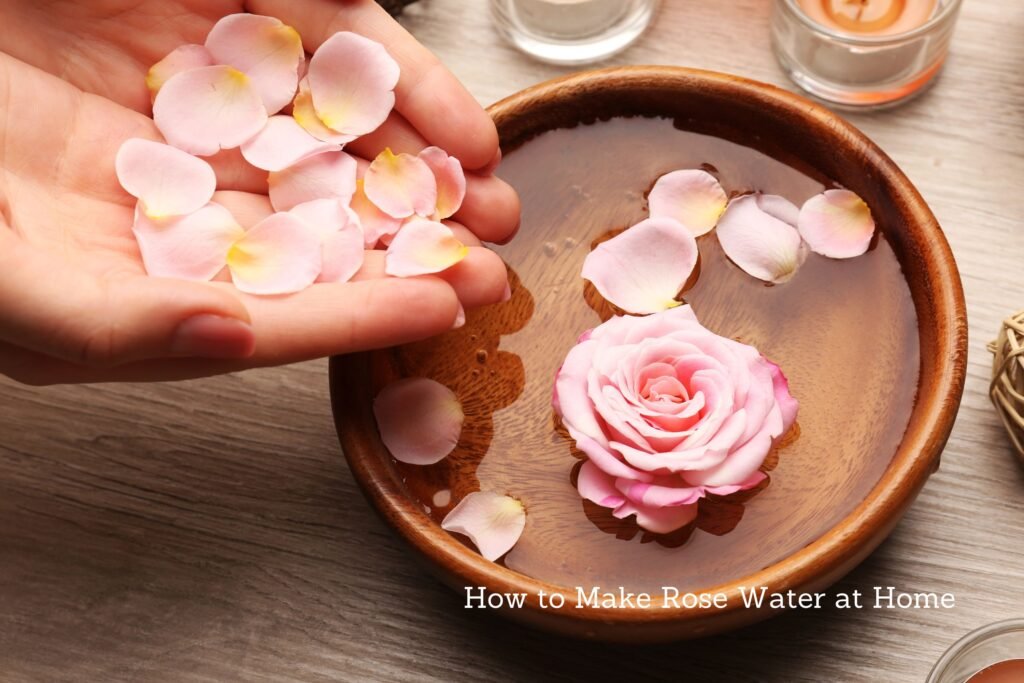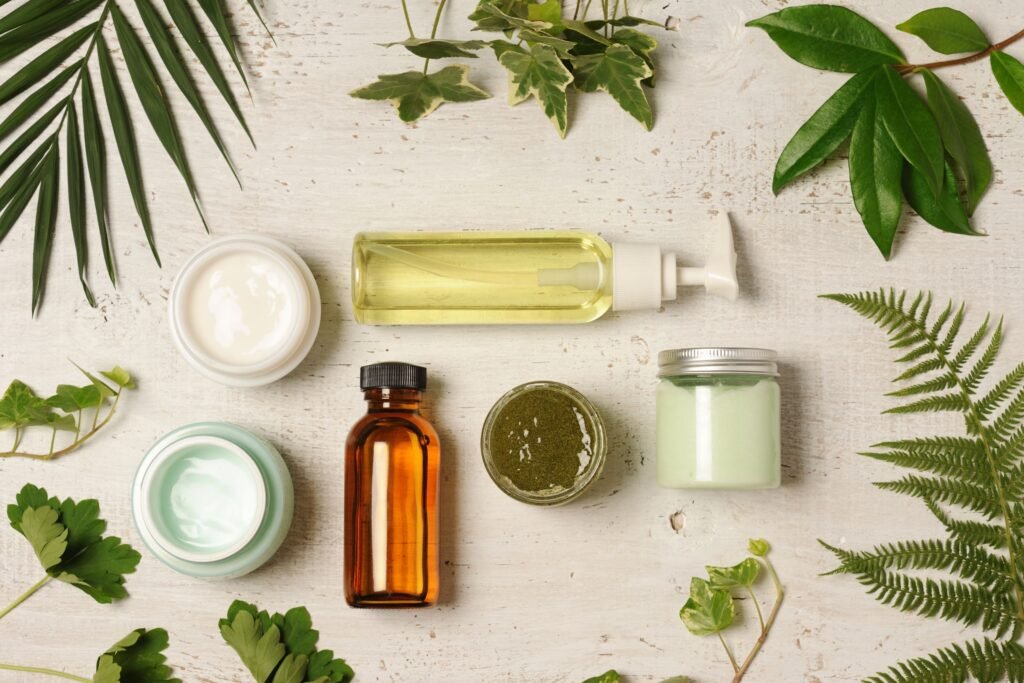Roses, especially red ones, are universally recognized as symbols of deep love and desire. Their rich color and delicate petals make them ideal representations of beauty and romance. In literature, art, and poetry, roses are frequently used to express the intensity of romantic emotions.
Rose water has a rich history that dates back thousands of years, with its origins believed to be in ancient Persia (modern-day Iran). It was highly valued for its fragrance, medicinal properties, and use in beauty rituals.
In Greek and Roman mythology, roses are linked to the goddess of love, Aphrodite (or Venus in Roman mythology). This connection further solidifies the rose’s status as a symbol of romantic love. In medieval times, roses were often associated with the Virgin Mary, symbolizing purity and beauty, which later evolved into a symbol of courtly love.
Benefits of Rose Water
Rose water offers a range of benefits for the skin, hair, health, and overall well-being due to its natural, gentle properties. Here are some of the key benefits of rose water:
1. Skincare Benefits
Hydration and Moisturization: Rose water helps to hydrate, revitalize, and moisturize the skin, giving it a refreshed look. It is great for all skin types, including sensitive and dry skin.
Soothing and Anti-Inflammatory: Its anti-inflammatory properties can reduce redness, irritation, and swelling, making it ideal for calming skin conditions like acne, eczema, and rosacea.
Antioxidant Protection: Rich in antioxidants, rose water protects skin cells from damage, helping to prevent the signs of aging and keeping the skin youthful.
Balancing pH Levels: Rose water can help balance the skin’s pH, restoring the natural barrier and preventing conditions caused by imbalances, such as acne.
Astringent Properties: It acts as a mild astringent, tightening pores, reducing excess oil, and toning the skin without drying it out.
2. Hair Care Benefits
Conditioning: Rose water can be used as a natural conditioner, adding shine and softness to the hair while promoting healthier-looking locks.
Scalp Health: It helps reduce dandruff, soothe an irritated scalp, and promote a healthier environment for hair growth.
Fragrance: The natural fragrance of rose water can leave the hair smelling fresh and pleasant.
3. Aromatherapy and Mood Enhancement
Stress Relief: The soothing scent of rose water is known to relieve anxiety, stress, and promote relaxation. It is often used in aromatherapy for its calming effects.
Mood Lifter: The natural aroma can help enhance mood, reduce feelings of depression, and promote emotional well-being.
4. Health Benefits
Digestive Aid: Rose water is used in some cultures as a mild digestive aid, helping to soothe the digestive tract and alleviate symptoms of indigestion.
Anti-Bacterial Properties: Its antibacterial properties can help cleanse and protect wounds, cuts, and burns, promoting faster healing.
Eye Care: Rose water can be used to relieve tired and puffy eyes, reduce redness, and calm irritation, making it a popular natural remedy for eye care.
5. Cosmetic and Beauty Uses
Makeup Setting Spray: Rose water can be used as a setting spray to keep makeup in place and provide a fresh, dewy finish.
Makeup Remover: Its gentle properties make it an effective natural makeup remover, especially for those with sensitive skin.
Facial Mist: As a refreshing facial mist, rose water hydrates the skin throughout the day, especially in hot or dry environments.
6. Culinary Uses
Flavor Enhancer: In cooking, rose water adds a subtle floral flavor to desserts, beverages, and savory dishes, particularly in Middle Eastern and Indian cuisines.
Refreshing Drinks: It can be added to teas, lemonades, and other beverages for a refreshing and aromatic twist.
7. Anti-Aging Effects
- Reduces Fine Lines and Wrinkles: Regular use of rose water can help to reduce the appearance of fine lines and wrinkles due to its hydrating and antioxidant properties.
Rose water’s versatility, gentle nature, and pleasant aroma make it a popular choice in beauty routines and wellness practices, offering a natural solution for various skin, hair, and health needs.
Methods of Making Rose Water
1. Simmering Method
Ingredients:
- Fresh rose petals
- Distilled water
Pro Tips
Opt for pesticide-free roses. Chemicals from pesticides can harm your skin. You can communicate with your local farmer whom you trust.
Measurements:
- 1x Batch: 1 cup of rose petals + 2 cups of distilled water
- 2x Batch: 2 cups of rose petals + 4 cups of distilled water
- 3x Batch: 3 cups of rose petals + 6 cups of distilled water
Procedure:
- Rinse the rose petals thoroughly to remove any dirt or insects.
- In a large pot, add the rose petals and distilled water. Cover the pot with a lid.
- Set the pot over medium-low heat and let it simmer until the petals lose their color (usually around 20-30 minutes). Make sure the water doesn’t boil, as boiling can damage the essential oils.
- Remove the pot from the heat and let it cool completely with the lid on.
- Strain the mixture using a fine mesh strainer or cheesecloth into a clean container. Discard the petals.
- Transfer the rose water into a glass bottle or spray bottle. Store in the refrigerator for up to 2 weeks.
2. Distillation Method
Ingredients:
- Fresh rose petals (organic and pesticide-free)
- Distilled water
- Ice cubes
Measurements:
- 1x Batch: 1 cup of rose petals + 1.5 cups of distilled water
- 2x Batch: 2 cups of rose petals + 3 cups of distilled water
- 3x Batch: 3 cups of rose petals + 4.5 cups of distilled water
Pro Tips
The distillation method yields more concentrated and high-quality rose water, similar to what you’d find commercially.
Procedure:
- Rinse the rose petals thoroughly.
- Place a heatproof bowl in the center of a large pot. Scatter the rose petals around the bowl and add distilled water.
- Place the lid of the pot upside down, then fill the inverted lid with ice cubes. This helps condense the steam into rose water.
- Heat the pot over medium-low heat. As the water heats, the steam will rise, hit the cold lid, and then condense, dripping into the bowl.
- Check occasionally to add more ice if it melts completely. Continue until the rose petals lose their color (about 30 minutes to 1 hour).
- Once done, remove the bowl carefully as it will contain your distilled rose water. Let it cool and then transfer it to a clean bottle.
- Store in a glass bottle or spray bottle in a cool, dark place for up to 6 months.
3. Cold Infusion Method
Ingredients:
- Fresh rose petals (organic and pesticide-free)
- Distilled water
Measurements:
1x Batch: 1 cup of rose petals + 1.5 cups of distilled water
2x Batch: 2 cups of rose petals + 3 cups of distilled water
3x Batch: 3 cups of rose petals + 4.5 cups of distilled water
Pro Tips
This method is best for preserving the natural scent and benefits of the rose petals without using heat.
Procedure:
- Clean the rose petals thoroughly.
- Place the rose petals in a large, clean jar. Pour distilled water over the petals, ensuring they are fully submerged.
- Cover the jar with a lid and let it sit at room temperature for 24 hours, away from direct sunlight.
- After 24 hours, strain the rose petals out of the water using a fine mesh strainer or cheesecloth.
- Pour the rose water into a glass bottle and store it in the refrigerator for up to 1 week.
Once you’ve made the rose water, it’s time to store it properly to ensure it lasts without spoiling. Here’s how you can store rose water:
1. Use a Clean Bottle
Always store rose water in a clean bottle. Glass bottles with tight lids are best because they keep the rose water fresh. Try to avoid plastic containers, as they can affect the quality over time.
2. Pick the Right Bottle
- Dark Glass Bottles: Dark-colored bottles, like amber or blue, are great because they protect rose water from light, which can reduce its freshness.
- Spray Bottles: For easy use, consider a clean spray bottle. This is handy if you like to use rose water as a facial mist or toner.
3. Keep It Cool and Out of Sunlight
Store your rose water in a cool, dark place, away from sunlight and heat. A cupboard or a pantry works well.
4. Put It in the Fridge
For the best results, keep rose water in the fridge. This helps it last longer and gives it a refreshing, cooling effect when you use it on your skin.
5. Label the Bottle
Write down the date when you made the rose water, so you know how fresh it is. Homemade rose water usually lasts about 2 weeks in the fridge. If you added a preservative, it could last up to 6 months.
6. Avoid Contamination
Make sure your hands or any tools you use are clean when handling the rose water. If you’re using a spray bottle, try not to touch the nozzle with your hands or let it touch your face directly.
7. Check for Spoiling
Before using, give it a quick check. If it smells bad or looks different, it’s best to throw it away as it might be spoiled.
Rose water can be used in many ways, but it’s important to learn the proper way of using it. Otherwise, it may affect your health and skin.
1. As a Facial Toner
Rose water works great as a natural toner. Simply soak a cotton pad with rose water and gently swipe it over your face after cleansing. It helps balance your skin’s pH, reduce redness, and tighten pores.
2. As a Face Mist
Fill a spray bottle with rose water and use it as a refreshing face mist throughout the day. It can help hydrate your skin, set makeup, and give you a quick pick-me-up whenever you feel tired.
3. In Your Bath
Add a few cups of rose water to your bath for a soothing and relaxing experience. It’s not only good for your skin but also adds a pleasant scent to your bathwater.
4. For Soothing Irritated Skin
Rose water can help calm irritated or sunburned skin. Apply it gently with a cotton pad or use it as a spray to soothe and cool the affected area.
5. As a Hair Rinse
After shampooing, use rose water as a final rinse to add shine and softness to your hair. It can also help reduce scalp irritation and leave your hair smelling great.
6. In Homemade Face Masks
Mix rose water into your DIY face masks. It works well with ingredients like clay, honey, or aloe vera to enhance the mask’s benefits and make your skin feel soft and refreshed.
7. To Refresh Tired Eyes
Soak cotton pads in chilled rose water and place them over your closed eyes for about 10 minutes. This can help reduce puffiness and dark circles, leaving your eyes feeling refreshed.
8. As a Makeup Remover
Combine rose water with a bit of coconut oil or a gentle cleanser to remove makeup naturally. It helps lift away makeup while also soothing your skin.
9. In Cooking and Baking
Rose water is also used in cooking, especially in Middle Eastern and Indian cuisines. It adds a floral flavor to desserts, drinks, and dishes like rice pudding or lemonade.
What to Keep in Mind
- When using rose water, make sure it’s pure and free of added chemicals or artificial fragrances, especially if you have sensitive skin.
- Always do a patch test before applying it to your face or body to check for any allergic reactions. Store it properly, ideally in a cool, dark place or the refrigerator, to keep it fresh.
- Use clean tools or hands when applying to avoid contamination, and watch out for any changes in smell or color, which can indicate spoilage.
- If you’re using it in food, make sure it’s food-grade rose water.






